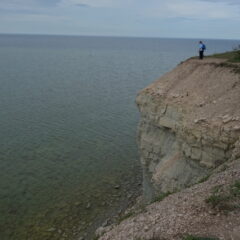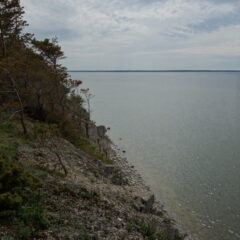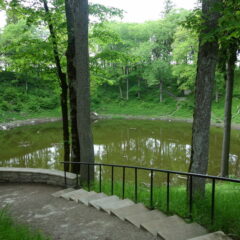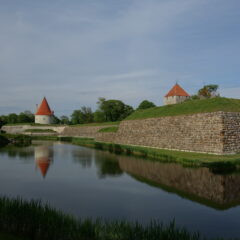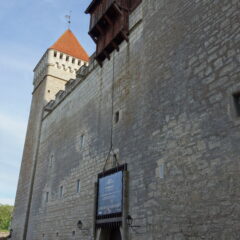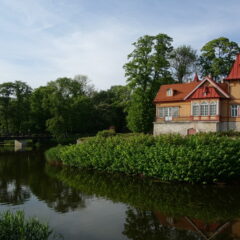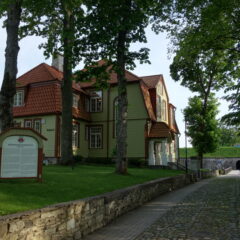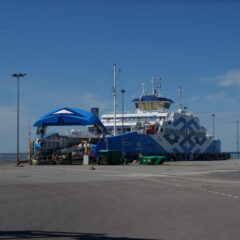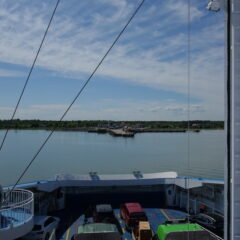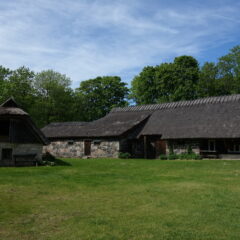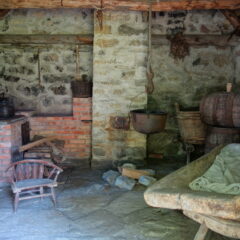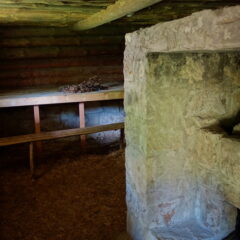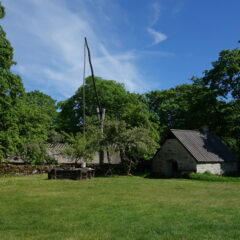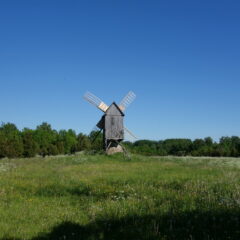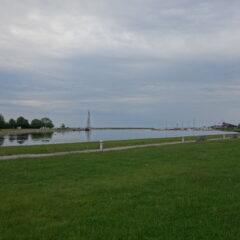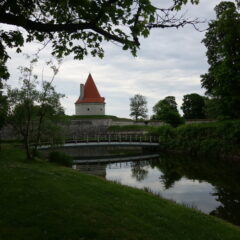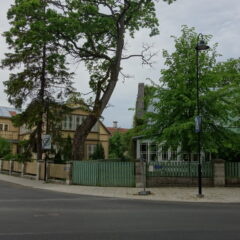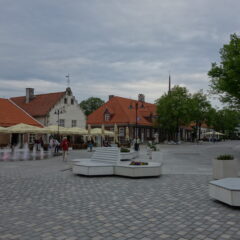We were back to Saaremaa at about 14:30, now continuing with a tour of the highlights of the island (some of which felt rather odd and random to me – hence the title).
After about an hour we arrived at Panga Cliff on the Northern coast of the island. The coastal cliff is the highest on the island – with a height of about 20m and a length around 2.5km. It might not be super-impressive, but with the forest on top and the walking trails next to it, it actually made a worthwhile stop.
Our next stop – at Angla Windmill Hill – was really for re-fueling … so essentially a coffee stop at the coffee shop at a tourist attraction (open air museum with windmill theme) and a slightly over-strained coffee machine (which is, why I went right for the ginger beer 🙂 ).
Nearby Karja Church was our next stop – a medieval church with rich stone decorations – and (un)fortunately closed. Final on the list of oddities was Kaali Crater. The crater (or rather craters, as there are nine in total) go back to a meteorite back around 1450 BC.
From here it was back to our base in Kuressaare, where we arrived around 18:00. After a bit of a break and a quick walk through the ground of Kuressaare Castle, it was dinner time. We went to the same place as the day before … enjoying a craft beer tasting (all from the local brewery) in a wine restaurant (somewhat odd), a fish with (odd) green bones (garfish) and rowan berry sorbet with champagne (the real stuff – oddly delicious 😉 ). So – nicely closing off a great day.
